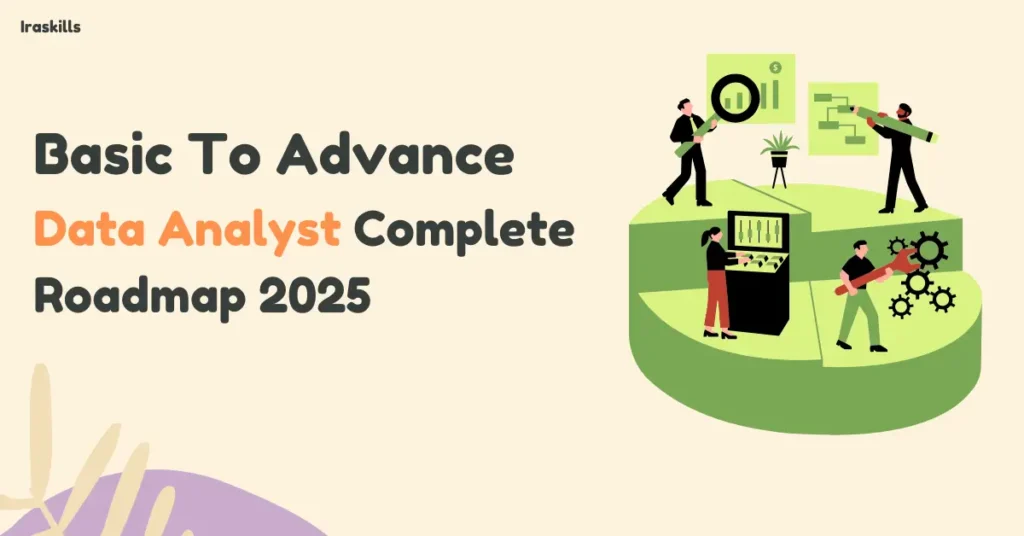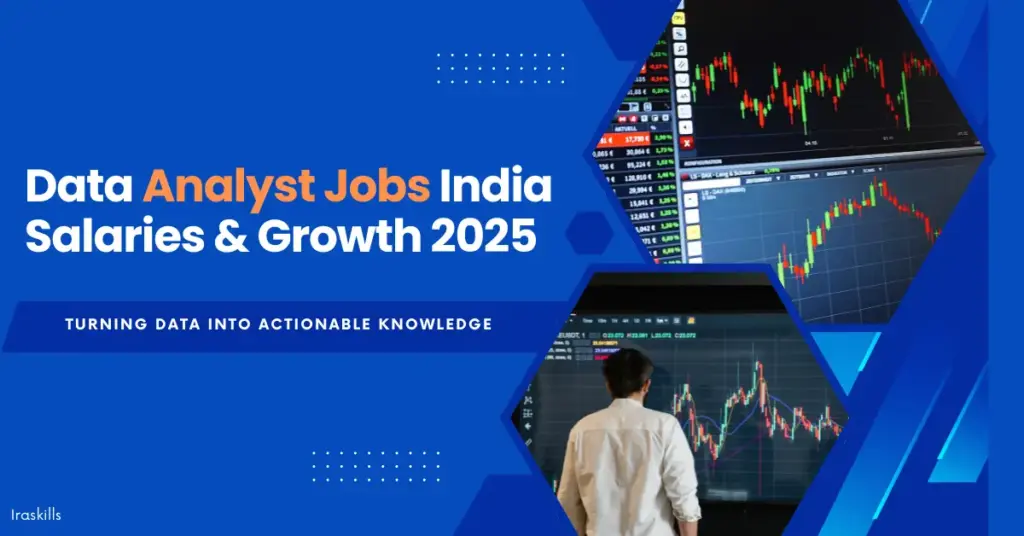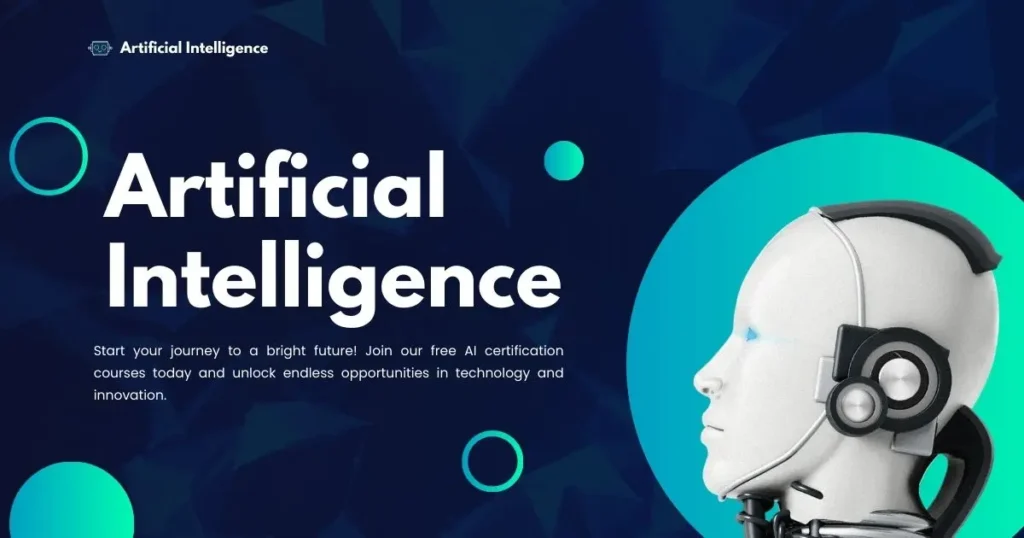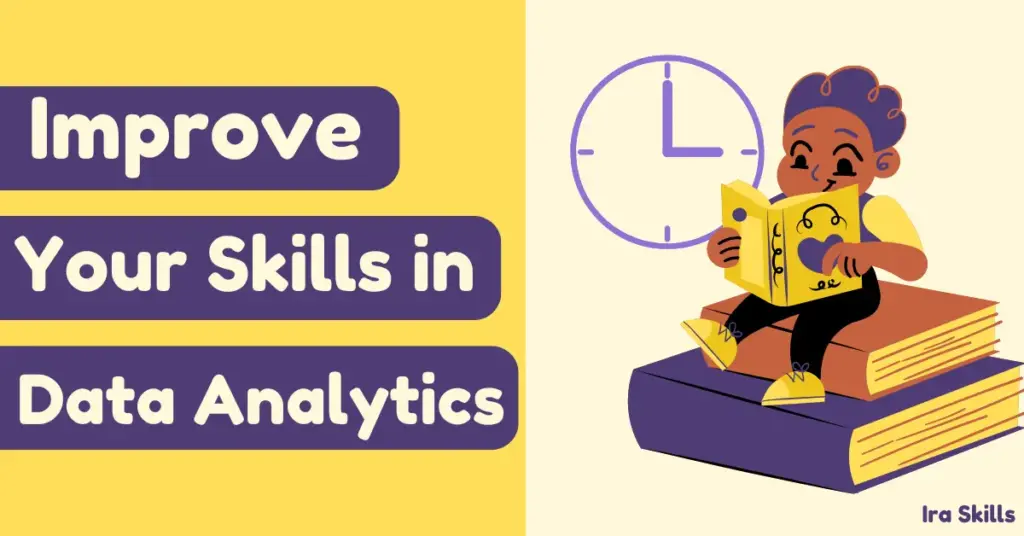Data analytics is one of the fastest-growing career fields today. Whether you’re a fresher or considering a career switch, this blog is for you!
Data Analytics growth will continue in the upcoming 10-15 years. So, this is the perfect time to start your career as a data analyst.
We’ll break down the Complete Roadmap to become a data analyst. This blog will give you complete insights on how to begin a career as a data analyst, which are the key areas you need to focus on, and how to crack an interview and get the best position in top MNCs.
Let’s deep dive to get more insights on data analysis and how to start it–
What Is Data Analytics?
Data analytics is the process of converting raw data into valuable insights. These insights help the company to make objective decisions and prepare the action plan to meet its results.
The process of Data Analytics include the following:
- Collection: Collecting information from various reliable sources.
- Cleaning: Fix mistakes and remove unnecessary details to improve the data.
- Exploring: Looking closely at the data to understand it better.
- Visualizing: Making simple charts or pictures to show patterns and trends.
- Analyzing: Using math to find meaning in the data.
Skills required to become a data analyst:
To become a data analyst, you need a varied combination of skills set which includes both technical and soft skills. Some of the most important skills required are–
- Analytical skills: One should be able to interpret data and make effective decisions based on data.
- Attention to detail: It is crucial, as every analysis must be accurate.
- Communication skills: One should be able to interpret complex data into easy language for their stakeholders.
- Problem-solving: One should be able to use data to address real-world business challenges.
Data analytics used in various industries:
In which all sectors, Data Analytics is used?
Almost everywhere. Here are the most important field where it is being used heavily:
- Finance: To analyze market trends and risks.
- Healthcare: Improve patient care through data-driven insights.
- Retail: Understand customer preferences to boost sales.
- Technology: Track software performance and user engagement.
So, from where shall you start?
Basic level
Start your journey by mastering these tools:
- Excel: It is used for data manipulation and simple visualizations.
Start with basics and go up to advanced level.
- SQL: This will help you to extract and manage data from databases.
Note- These are the basics and musts for building a strong career in Data Analytics
IRA Skills is well known for teaching this. You can learn these anytime you are with us.
Here is the link— Insert link
Intermediate Level–
This level further is divided into two parts.
- Part 1— Learn Programming languages
- Part 2— Master Data Visualization Tools
Part-1—Learn Programming Languages You Should Know:
After getting thorough with the basics, you can start with these programming languages. The best ones to learn are the following:
- Python: Learning Python will help with data cleaning, analysis, and visualization.
- R: It is great for doing statistical analysis and research work.
These languages will help you the most.
Part-2— Data Visualization Tools To Master
Charts are very useful and the easiest way to understand complex data is in a visual form.
This part includes learning data visualization tools like Tableau and Power BI to present data in visually engaging ways.
Lean to make Charts, graphs, and dashboards to make complex information easy to understand.
Advance Level–
After coming this far, you will become ready to learn advanced skills. This oncludes–
- Machine learning: This will help to build predictive models to forecast trends.
- Data Engineering: Learn how to manage big data and automate workflows.
Building Experience and Developing a Portfolio
Internships and Entry-Level Opportunities
Apply for internships to understand how the real world works. Many companies are open to hiring beginners who want to learn and work.
Working on Personal Projects
Personal projects are a great way to practice and improve your skills by analyzing publicly available data. This hands-on experience allows you to explore real-world problems, identify areas for improvement, and devise practical solutions. Working on such projects not only helps you apply your knowledge but also enhances your problem-solving abilities, making you more confident and capable of addressing challenges in various fields.
Creating a professional portfolio is essential. It should include the following things:
- Reports with actionable insights
- Data visualizations that tell a story.
- Case studies showcasing your problem-solving abilities.
Build an ATS-Friendly Resume and Portfolio
- Customize your resume by including keywords from the job description to match the role you’re applying for.
- Highlight your technical skills, certifications, and any relevant achievements.
- Showcase key projects that demonstrate your ability to solve real-world problems using data.
- Build a professional portfolio that includes dashboards, visualizations, and data analysis projects you’ve worked on.
- Add links to your LinkedIn profile to make it easy for employers to view your work.
- Keep your resume concise, well-structured, and free from errors.
Preparing for Interviews: The Most Common Questions
Be ready to answer questions like:
- “Can you explain a challenging project you worked on?”
- “How do you handle messy datasets?”
- “What would you do if stakeholders don’t understand your analysis?” Practice explaining technical concepts in simple terms.
Networking and Professional Development
Attend seminars, workshops, and events; join LinkedIn groups; and connect with other analysts. Networking can lead to better job opportunities and building connections with various people. Stay updated with the latest tools and trends to keep your skills sharp.
FAQs on Becoming a Data Analyst
1. Who is a data analyst?
A data analyst works with data to find patterns and insights that help companies make smarter decisions.
2. Why is this career in demand?
Companies use data to make important choices, so they need skilled people to understand and explain the numbers.
3. Can I become a data analyst without experience?
Yes! With the right training and practice, anyone can learn to be a data analyst.
Conclusion:
This roadmap helps you gain more insights into data analytics, from basic math to advanced machine learning.
Data analysis as a career field is constantly evolving, and one has to stay updated and keep learning and practicing. The data analytics field is full of opportunities.
Start by learning this skill, preparing your ATS-friendly resume, working with companies or personal projects, trying to build a network on LinkedIn, and continually working on expanding your portfolio.
Learning is a continuous process. Your data analytics career is waiting—go for it!
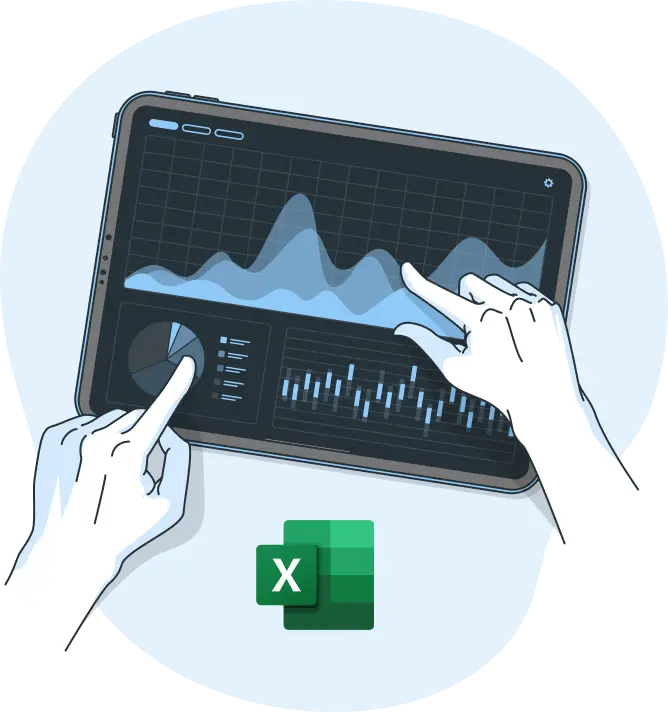
 Login
Login